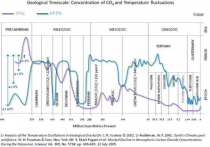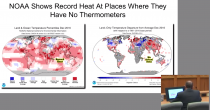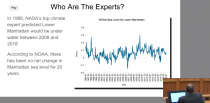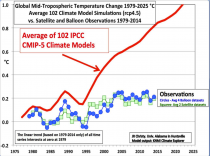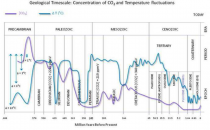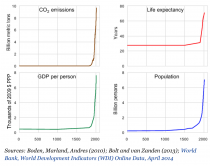By Joseph D’Aleo, WeatherBELL Analytics, LLC
TS Harvey’s center crossed the coast just west of Cameron, Louisiana, with most of the associated deep convection located over extreme southeastern Texas and western Louisiana early this morning.
NHC reports at 4am CDT - Although the rain has ended in the Houston/Galveston area, the Beaumont/Port Arthur area was particularly hard hit overnight, with about 12.5 inches reported at the Jack Brooks Regional Airport since 7 pm CDT
See the large area of 20” rains in southeast Texas to southwest Louisiana.
See 1 gauge reported 51.88”. Harris county maintains a network of 156 reported rainfall gauges and stream gauges. See most of the amounts in the city were in the 30 to low 40 inch range. The heaviest was in the southeast.
39 gauges were in major flood, 11 more moderate flooding.
As Dr Spencer pointed out, There have been many flood disasters in the Houston area, even dating to the mid-1800s when the population was very low. In December of 1935 a massive flood occurred in the downtown area as the water level height measured at Buffalo Bayou in Houston topped out at 54.4 feet.
The Buffalo Bayou gauge topped out with Harvey at around 39 feet on the 28th and dropped a bit, recovered to 37 feet then has been receding.
The three stations that exceeded the 48 inch record set in 1978 in Amelia put Harvey the top of the list of tropical rainmakers in the lower 48 states as WeatherBELL predicted several days ago. 6 of the 10 storms were in Texas where storms often get trapped in summer or fall.
Here was Amelia in 1978 with the 48 inch total for 7 days at Medina. The gauge density there obviously was less and we can’t know with certainty if there was more with that and other storms on the list.
See the storm when it came ashore as a CAT4.
It was the first landfalling hurricane and major hurricane this decade in Texas. The last major was Bret in 1999. Rita and Ike came close in 2004 and 2008.
It was tied for 14th place by pressure (Klotzbach)
We have with Harvey had 7 landfalling hurricanes this decade. We have to have 8 more the rest of this season and in 2018 and 2019 to keep this decade from being the quietest on record.
Looks like the public agrees with Alan.
Scott Rasmussen’s Number of the Day
By Scott Rasmussen
August 21, 2017: Twenty-eight percent (28%) of Americans think that climate scientists understand the causes of global climate change “very well.” A Pew Research study found that only 19% believe that the climate scientists have a very good understanding of the best ways to address the issue.
In general, the study found that Americans trust climate scientists more than politicians on the topic. Two-thirds (67%) believe scientists should play a major role in addressing policy issues on the matter. Most (56%) also believe that energy industry leaders (56%) and the general public (56%) should have a major say in such policy topics.
The Pew study, however, also found that people believe there are differences of opinion among the climate scientists. Only 27% believe that there is a consensus on the issue and that just about all climate scientists believe human behavior is mostly responsible for global climate change. Another 35% think more than half hold this view.
The survey also explored the degree of trust and confidence in those researching climate science. Thirty-six percent (36%) believe that, most of the time, scientists’ research findings are motivated by a desire to advance their own careers. Only 32% say that they mostly rely on the best scientific evidence. Twenty-seven percent (27%) believe that political views of the scientists generally influence their work.
Liberal Democrats tend to express high levels of confidence in the climate scientists and their motives. Conservative Republicans are often quite skeptical. Most other Americans have mixed views.
----------
Alan Carlin August 9, 2017
Like other liberal news outlets, the New York Times has been busy printing unapproved internal Trump Administration material this year. On August 8, 2017 they printed a Draft Report as part of a new National Climate Assessment. It was prepared primarily during the Obama Administration by a Federal inter-agency group and is still residing on an outside server from an earlier public comment period. They concluded, among other things, that “Many lines of evidence demonstrate that human activities, especially emissions of greenhouse (heat-trapping) gases, are primarily responsible for recent observed climate change.”
The problem is not that the viewpoints expressed are new or useful or that the draft was not already available; rather they represent a rather tired repetition of the usual climate alarmist ideology with only occasional updates. This is unfortunate since it is becoming ever clearer that the ideology has become scientifically indefensible and needs to be abandoned in favor of a new approach to climate science.
Perhaps the Most Basic Problem
Perhaps the most basic problem with this Draft Report, like most of the major Climate Industrial Complex (CIC) reports, is that it primarily depends for its justification on the IPCC’s bottom-up global climate models (as they discuss in Section 4.3 of the Draft Report). The Draft Report shows that the climate alarmists have by no means given up their horrifically expensive and misguided crusade to reduce carbon dioxide (CO2) emissions, despite that the alarmists’ very extensive attempt to justify it is hopeless.
Not only is their conclusion that global warming is primarily due to human activity, but also that temperatures will increase significantly because of increases in anthropogenic atmospheric CO2. Their basic methodology is based on the UN Intergovernmental Panel on Climate Change’s (IPCC’s) analyses conducted over many years. The Heartland Institute has gone to great effort to point out many of the problems and inconsistencies in the conclusions reached using these models. But it is increasingly clear why the IPCC has been having a hard time explaining the increasing divergence between their models and actual temperatures. One of the basic problems is that alarmists have always used a bottom-up approach in their methodology (which is to aggregate the results for individual geographic areas based on the application of subjective physical relationships between various physical effects). This approach cannot produce valid results no matter how much is spent on it, how often it is repeated, or how large the climate models they use. As Mike Jonas has recently written:
In this very uncertain world of climate, one thing is just about certain: No bottom-up computer model will ever be able to predict climate. We learned above [in the article this was excerpted from] that there isn’t enough computer power now even to model GCRs [galactic cosmic rays], let alone all the other climate factors. But the issue of computer model ability goes way beyond that. In a complex non-linear system like climate, there are squillions of situations where the outcome is indeterminate. That’s because the same influence can give very different results in slightly different conditions. Because we can never predict the conditions accurately enough - in fact we can’t even know what all the conditions are right now - our bottom-up climate models can never ever predict the future. And the climate models that provide guidance to governments are all bottom-up.
The bottom-up GCM was a bad approach from the start and should never have been paid for by the taxpayers. All that we have are computer models that were designed and then tuned to lead to the IPCC’s desired answers and have had a difficult time even doing that.
So not only are the results claiming that global temperatures are largely determined by atmospheric CO2 wrong, but the basic methodology is useless. Climate is a coupled, non-linear chaotic system, and the IPCC agrees that this is the case. It cannot be usefully modeled by using necessarily limited models which assume the opposite.
An Entirely New Approach Is Needed
Despite repeated claims by climate alarmists that climate science is settled, nothing could be further from the case. In fact, an entirely new approach is needed if much progress is to be made in characterizing and understanding the climate system. This approach must be a top-down rather than a bottom-up approach. To my knowledge, only one such study (and earlier versions thereof) exists taking this approach, which I will call the 2017 WCD report after the authors’ last names. And it appears to give plausible results. It says that CO2 does not have a significant effect on global temperatures and that global temperatures can be fully explained since about 1960 by entirely natural factors and do not require any human activity to explain what has occurred. This rules out many if not most of the Draft Report’s conclusions.
A second very recent report including two of the same authors as WCD 2017 concludes that the keepers of the official global surface temperature records have repeatedly “adjusted” them to the point that they are no longer representative of the underlying data. Accordingly, the authors argue that the data used in the Draft Report from surface temperature sources and the conclusions reached from using this data are too unreliable for policy use.
The Time Has Come to Abandon the IPCC’s Bottom-up Approach and Correct the Basic Data Used Before Further Expenditures Are Made
It is time to totally abandon the IPCC’s bottom-up climate models as an ultra expensive sunk cost and start over. The 2017 WCD report would be a good place to start in redoing the basic climate analyses. Until this is done, little progress is possible in many of the major issues in climate science, and no further expenditures should be made responding to climate alarmism until the new methodology has been thoroughly tested and the basic surface temperature data has been reconstituted in a useful form. The mistaken choice of methodology has ended up costing taxpayers tens of billions in research costs and has reportedly resulted in about $1.5 trillion per year for renewable and related construction, which needs to be written off too.
I recommend that the Trump Administration issue the Draft Report with an added section explaining how useless and biased the rest of the Draft Report is because it primarily relies on meaningless model results and unreliable surface temperature data. If such a combined report were issued it would be one of the first government reports anywhere to seriously question the IPCC’s results, and has long been needed. Scientific hypotheses and data that have never been rigorously tested are not fit to be used for public policy purposes, and particularly for those involving multi-trillion expenditures per year.
By Joe Bastardi, Patriot Post
There was a minor uproar over a recent Bill Nye comment that is summed up in this article: ”Bill Nye: Climate Change Scientists Need To Wait For Older People To Die.”

But let’s look at this for what it really reveals.
First of all, Bill is stating a fact. Many in the “resistance” to climate change are Bill’s age and older. But this generation was brought up differently than the current group of people, many rising through academia. We were taught to question authority. We were also encouraged to reject groupthink. Perhaps it had to do with Eisenhower’s farewell speech where a warning against the military-industrial complex - which when I was growing up in the ‘60s and ‘70s was being used as a rallying cry against our involvement in Vietnam - was a big deal. But those of us in our formative years then who are now in the generation that Bill is talking about also took note of the other part of Eisenhower’s speech.
Let me borrow from this Wikipedia link. The legacy of the speech from the article above attests to my assertion about its importance in relation to Vietnam:
Although it was much broader, Eisenhower’s speech is remembered primarily for its reference to the military-industrial complex. The phrase gained acceptance during the Vietnam War era and 21st-century commentators have expressed the opinion that a number of the fears raised in his speech have come true.
The part referenced in particular was this:
In the councils of government, we must guard against the acquisition of unwarranted influence, whether sought or unsought, by the military-industrial complex. The potential for the disastrous rise of misplaced power exists and will persist. We must never let the weight of this combination endanger our liberties or democratic processes. We should take nothing for granted. Only an alert and knowledgeable citizenry can compel the proper meshing of the huge industrial and military machinery of defense with our peaceful methods and goals, so that security and liberty may prosper together.
Here is one of the greatest generals of our nation warning against the military-industrial complex, and many took it to heart.
But we of that generation also knew about the second part of his warning.
Akin to, and largely responsible for the sweeping changes in our industrial-military posture, has been the technological revolution during recent decades.
In this revolution, research has become central, it also becomes more formalized, complex, and costly. A steadily increasing share is conducted for, by, or at the direction of, the Federal government....
The prospect of domination of the nation’s scholars by Federal employment, project allocation, and the power of money is ever present and is gravely to be regarded.
Yet in holding scientific discovery in respect, as we should, we must also be alert to the equal and opposite danger that public policy could itself become the captive of a scientific-technological elite.
Ike was right.
Here is where Nye is correct. He understands that the people who were brought up in the form of Americanism and who believed the individual should question authority are getting older and will not be around when the new vanguard takes over. Enlightened he believes himself to be, and I suspect others like Al Gore think they are simply leading the new wave to replace the old wave. But instead of attacking Nye and making it seem like he has a death wish for his opponents, why don’t people actually look at the facts of what he is saying and what that actually means for things like critical thought and skepticism? Those things are essential not only to the scientific method but also for the basis for man to use his free will to better himself. The bottom line is that Nye’s statement does not identify a problem with Nye, it identifies a problem with what has happened over the post-Vietnam generations. Nye, and the climate issue looked at deeper, reveal a deeper problem that strikes at the core of what has lead to the elevation of the nation to where we are.
Bottom line: Nye is right about the inevitable result. It does not make him right about CO2 being the climate control knob. But Nye is not the demon here; he is more a messenger of the very changes that Eisenhower warned us about in his speech. And what is apparent is that the generation which followed that speech took his word to heart over one thing but went the opposite way on another.
Some may be tempted to think I am going soft on Nye. I am evaluating what he said in an objective manner. I would suggest instead of tearing at the messenger we look at the message. For in his message is the real danger not to the people that are aging but to the very methodology essential for those who follow to continue to build upon the successes that solid foundational skepticism and freedom make possible.
Joe Bastardi is chief forecaster at WeatherBELL Analytics, a meteorological consulting firm, and contributor to The Patriot Post on environmental issues.
By Joseph D’Aleo, CCM, AMS Fellow
Note that our press release and research papers hit a raw nerve with alarmists who did not really meaningfully argue the data or science but challenged the claim it was ‘peer reviewed’ (in the sense they have defined and controlled the peer review process through what have become advocacy journals).
The traditional peer review often can be compared to the TSA boarding card approval process. If you are not on any no fly list, after a review of a photo ID and/or passport, you get a stamp and move on. With journal submissions, if you have the politically correct credentials, you get the stamp and are published. The journal ‘no-fly’ list it appears includes those deemed to be skeptics. For the review, there is often at least one reviewer ‘gatekeeper’ responsible for ensuring you don’t board the plane or in this case get your paper in the journal no matter how impressive your CV and content-rich your paper.
Our research reports are not traditional journal articles. The reports follow the approach used frequently in industry often for their own internal use. They were prepared by highly qualified authors using the best available data and understanding of the scientific factors, analyzed properly by the very best statisticians/econometricians. The reviewers who endorsed them are chosen to be highly qualified to evaluate the work. The individuals quoted in fact checker reviews like on Snopes are simply enforcers of orthodoxy, unable or unwilling to understand the processes applied and the science.
You must know that the traditional journal peer review process is broken. It is failing in a lack of robustness in the statistical analysis and widespread inability to replicate results. This is true in both the Medical and Scientific areas. See examples here and here.
This story in Forbes by Henry Miller says “A number of empirical studies show that 80-90% of the claims coming from supposedly scientific studies in major journals fail to replicate”.
Another recent paper in Nature showed 70% of the papers in medical journals had studies that could not be replicated, many not even by the original authors. See an example of one such falsified report that the author worries is a part of an epidemic of agenda-driven science by press release and falsification that has reached crisis proportions here.
Other reports show an alarming number of papers having to be retracted. For example here Springer is retracting 107 papers from one journal after discovering they had been accepted with fake peer reviews.
Result-oriented corruption of peer review in climate science was proven by the Climategate emails.
In the journals, there are a small set of gatekeepers that block anything that goes against the editorial biases of the journals. Conversely, these journals and their reviewers do not provide a thorough due diligence review of those that they tend to agree with ideologically. They are engaged in orthodoxy enforcement.
Indeed, Henry Miller wrote: “Another worrisome trend is the increasing publication of the results of flawed ‘advocacy research’ that is actually designed to give a false result that provides propaganda value for activists and can be cited long after the findings have been discredited.” A prime example of this is the hideously flawed but endlessly repeated “97% of climate scientists” paper by Cook and Lewandowski. EPA’s own Inspector General found that EPA’s Endangerment Finding was never properly reviewed, yet it is the basis of all EPA GHG regulations that imposed hundreds of billions in costs on the U.S. economy.
The scientific method requires the data used be made available and the work must be capable of being replicated. This should be required of all journals (in virtually all cases, as shown above, it is not). Peer review has become pal review with gatekeepers that prevent alternate unbiased data analyses and presentation but rush new papers that support their ideology or view on the science.
In our research reports, we identify the reviewers, who have lent their names to the conclusion, and provide full access to the data for others to work with and either refute replicate, with and instructions on the analytical methods used.
Our team chose to apply the same research report procedures used in industry, which is to assemble the most qualified authors with the skills required to compile the data and rigorously perform the correct analysis. They draft a report and share the draft with a team of experts chosen for their expertise in this field to provide feedback. Almost no journals require that and their failure and rejection numbers speak for themselves.
Wegman et. al suggested one of the common failures in climate papers is the lack of necessary statistical expertise. For our research reports we assembled the highest qualified data experts, econometricians/statisticians and meteorologists/climatologists to draft the research project, do the rigorous statistical/econometric analyses, and then submitted their work to the best qualified scientists/econometricians for review. Attempts to discredit this report are now of course being made because it raises critically important questions about the quality and trustworthiness of the global surface temperature data sets.
The facts and statistical reasoning of this paper cannot be refuted merely by carping peer review. Instead, demonstration of a factual or logical error is required.
----------
Original Post:
This release and research study was covered by Michael Bastasch in the Daily Caller and picked up by Drudge.
Stated simply, our new research findings building on the previous work, totally debunks EPA’s claim that CO2 is a pollutant that must therefore be regulated. It does so by very clearly demonstrating the “Global Average Surface Temperature (GAST) “ data, quoted all the time as setting new surface temperature records, have been purposefully adjusted in a manner such that they are now basically meaningless numbers. Continued reliance on this manipulated GAST data is supporting CO2 regulatory actions that very negatively impact the poor not only in the U.S., but worldwide. There is no scientific basis for this widespread regulation.
PRESS RELEASE
On the Validity of NOAA, NASA and Hadley CRU Global Average Surface Temperature Data & The Validity of EPA’s CO2 Endangerment Finding Abridged Research Report June 2017
Just released: A peer reviewed Climate Science Research Report has proven that it is all but certain that EPA’s basic claim that CO2 is a pollutant is totally false. All research was done pro bono.
The objective of this research was to test the hypothesis that Global Average Surface Temperature (GAST) data are sufficiently credible estimates of global average temperatures such that they can be relied upon for climate modeling and policy analysis purposes. The relevance of this research is that the validity of EPA’s CO2 Endangerment Finding requires GAST data to be a valid representation of reality.
In this research report past changes in the previously reported historical data are quantified. It was found that each new version of GAST has nearly always exhibited a steeper warming linear trend over its entire history. And, it was nearly always accomplished by each entity systematically removing the previously existing cyclical temperature pattern. This was true for all three entities providing GAST data measurement, NOAA, NASA and Hadley CRU.
As a result, this research sought to validate the current estimates of GAST using the best available relevant data. The conclusive findings were that the three GAST data sets are not a valid representation of reality. In fact, the magnitude of their historical data adjustments which removed their cyclical temperature patterns are totally inconsistent with published and credible U.S.and other temperature data.
Thus, despite current claims of record setting warming, it is impossible to conclude from the NOAA, NASA and Hadley CRU GAST data sets that recent years have been the warmest ever.
Finally, since GAST data set validity is a necessary condition for EPA’s CO2 Endangerment Finding, it too is invalidated by these research findings. This means that EPA’s 2009 claim that CO2 is a pollutant has been decisively invalidated by this research.
---------
The press release and research report was covered in the Daily Caller today here. In the story Michael Bastasch writes:
Sam Kazman, an attorney with the Competitive Enterprise Institute (CEI), said the study added an “important new piece of evidence to this debate” over whether to reopen the endangerment finding. CEI petitioned EPA to reopen the endangerment finding in February.
“I think this adds a very strong new element to it,” Kazman told TheDCNF. “It’s enough reason to open things formally and open public comment on the charges we make.”
Since President Donald Trump ordered EPA Administrator Scott Pruitt to review the Clean Power Plan, there’s been speculation the administration would reopen the endangerment finding to new scrutiny.
---------
Icecap Note: One of the reasons the temperature measures are flawed in the great uncertainties involved. See details here. See more detail here and an earlier very detailed working document here.
NCDC Climate Director Tom Karl whose paper in 1988 defined the UHI adjustment for the first version of USHCN wrote with Kukla and Gavin in a 1986 paper on Urban Warming:
“… the urban growth inhomogeneity is serious and must be taken into account when assessing the reliability of temperature records.” Inexplicably, the UHI adjustment Karl argued for was removed in USHCNv2. Many of us believe the global warming depicted is largely urban warming as urban heat is blended into the more representative rural station data through “homogenization”.
Recall this was the third Research Report in the Series - the first two research efforts (see link here) set out to test for the Existence of a “Tropical Hot Spot” and the Validity of EPA’s CO2 Endangerment Finding. Both dealt carefully and properly with econometric simultaneous equation parameter estimation issues in the two separate structural analyses that were carried out. And, both efforts involved the same three authors. Each analyzed the same Tropical, Contiguous U.S. and Global Temperature data sets.
“The objective of this research was to determine whether or not a straightforward application of the “proper mathematical methods” would support EPA’s basic claim that CO2 is a pollutant. Stated simply, their claim is that GAST is primarily a function of four explanatory variables: Atmospheric CO2 Levels (CO2), Solar Activity (SA), Volcanic Activity (VA), and a coupled ocean-atmosphere phenomenon called the El Nino-Southern Oscillation (ENSO.)” This research failed to find that the steadily rising Atmospheric CO2 Concentrations have had a statistically significant impact on any of the 14 temperature data sets that were analyzed. The tropospheric and surface temperature data measurements that were analyzed were taken by many different entities using balloons, satellites, buoys and various land based techniques. Needless to say, if regardless of data source, the analysis results are the same, the analysis findings should be considered highly credible.
The bottom line is the failure of the real world data to support the EPA’s 3 lines of evidence in the Endangerment Finding invalidates it and all regulations which are imposed based on it.
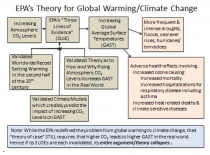
‘http://dailycaller.com/2017/07/05/exclusive-study-finds-temperature-adjustments-account-for-nearly-all-of-the-warming-in-climate-data/
Here is the actual global data that gets incorporated into the models that are run 4 times daily. There are no adjustments. The data is based on 6 hourly forecasts adjusted for new observations. We are coming off the El Nino warm period.
See how since 2005, warm spikes have occurred with El Nions and dips with La Ninas.
See video post from WeatherBELL this Sunday showing summer heat has been declining for decades!!
See this post that shows how GISS has been manipulated.
By Tony Heller, the Deplorable Climate Science Blog
This included record heat in South Sudan and the Central African Republic and a very hot Eurasia.
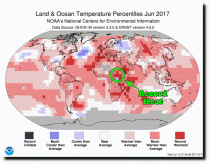
Global Climate Report - June 2017 | State of the Climate | National Centers for Environmental Information (NCEI)
Enlarged
Never mind that they don’t actually have any thermometer readings in South Sudan and the Central African Republic. “Gray areas represent missing data.” And never mind their actual thermometer readings in Eurasia showed a significant percentage of below normal temperatures.
And never mind that satellites actually measured temperatures in South Sudan and the Central African Republic and found that they were just about average.
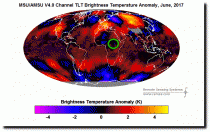
RSS / MSU Data Images / Monthly
Enlarged
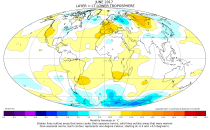
UAH MSU June Anomaly
Enlarged
NOAA still believes they are tasked with keeping the global warming scam alive, so they make up fake data to bump temperatures up. Then they get Zeke to tell the press that they actually adjust temperatures down.
It is time to drain the climate swamp.
See also Adjusting Measurements to Match the Models Part 1: Surface Air Temperatures by Roger Andrews
Guest Post by John McLean
When the IPCC’s in a hole and doesn’t have a paper to cite, who’s it gonna call?
(All together) BEN SANTER!
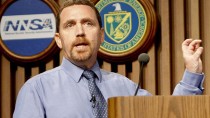
Santer, Wrigley and others, including several IPCC authors, fixed it for the 1995 report with a “miracle” last-minute paper that claimed to have solid evidence of the human influence on climate. The paper had been submitted and not even reached the stage of review when it was included in the IPCC report. At the instigation of the IPCC Working Group I head, John Houghton, the whole pivotal chapter was revised to accommodate it. And all this happened after the second expert review but before government representatives got together to decide what should be said.
About 18 months later the paper was finally published, citing the IPCC report that cited it, and was laughed off the stage. Never mind. It had served its purpose of manipulating opinion about manmade warming and convincing the new-formed UNFCCC that it didn’t need its own subsidiary organization to fiddle science to support the UNFCCC’s claims; the IPCC was perfectly capable of doing that.
Roll forward about 20 years. The IPCC’s 2013 report showed (text box 9.2) that climate models were rubbish at predicting average global temperatures with 111 of 114 climate model runs predicting, for 1998 to 2012, greater warming than the HadCRUT4 temperature data indicated, which was in fact statistically indistinguishable from zero.
What 5AR didn’t make clear was that climate models are run with and with greenhouses gases and the IPCC blames the difference in the two sets of output on manmade warming. (It’s a completely specious argument unless it can be proven that climate models are 100% accurate when it comes to algorithmically including every climate forcing, which of course they are not. The comparison study in fact shows nothing more than the sensitivity of the models to the inclusion of greenhouse gases.)
With climate models poor at making prediction it also follows that they are poor at estimating the influence of greenhouse gases on climate. If the public becomes aware of this then the ground is cut from beneath the UNFCCC’s claims, which means the Paris Climate Agreement will be seen as the farce it really is and all that rearrangement of the global economy to suit UN socialists won’t take place.
There is simply no way that IPCC 6AR can be allowed to continue to cast doubt on climate models because it might mean that end of both the IPCC and UNFCCC, not to mention the incomes and reputations of so-called climate science experts taking a sharp nose-dive.
So who’s the IPCC gonna call? Ben Santer!
This time around the paper has been published so that it complies with rules set down after the 1995 fiasco and can be cited. Being published of course doesn’t mean that it’s any good.
One of its key sentence is “None of our findings call into question the reality of long-term warming of Earth’s troposphere and surface, or cast doubt on prevailing estimates of the amount of warming we can expect from future increases in (greenhouse gas) concentrations.”
I’m going to call this the Santer Clause because the last half of it is about as real.
Even the first half is interesting because anyone can shift the goal posts and start the trend in whatever year supports their argument. Select the year carefully and you’ll find that temperatures have risen since then, select another year and they]re flat, select another and temperatures have fallen.
The other important sentence in the Santer et al paper is “We conclude that model overestimation of tropospheric warming in the early twenty-first century is partly due to systematic deficiencies
in some of the post-2000 external forcings used in the model simulations.” So it’s not climate models that are wrong; it’s the data put into them, in other words it’s the weather.
Talk about climate denial.
There’s no concession that a more plausible explanation is that climate models are nonsense, as IPCC 5AR showed, and that for the 1980s and 1990s the output of the models looked approximately correct because greenhouses gases were exaggerated while the real drivers of climate, the natural forces and internal variability, were underplayed.
The frequency of El Nino events has slowed since the late 1990s and the dominance of such events over La Nina events has weakened, meaning that warming and cooling episodes are tending to balance and that temperature trends remain flat.
The gap between what the models predict and what the data shows would be smaller if the algorithms in the models were corrected. Of course that’s unlikely to happen because the whole notion of significant manmade warming would implode and the IPCC and UNFCCC disappear. The IPCC will now cite this Santer fantasy to try to ensure that doesn’t happen.
It’s a sobering thought that if the implosion doesn’t happen now and the disconnect between the belief and the reality continues to increase then it’s probably only a matter of time before countries start fudging temperature data, to make it show warming that isn’t happening. They have millions or even billions of dollars at stake if the myth collapsed and surely it’s too big a carrot to give up without a fight.
When the reputation of climate science ends up in the gutter as a result of all the nonsense let’s just hope it’s not Ben Santer who’s called to fix it.
See also John’s IPCC Review “Prejudiced authors, Prejudiced findings” here.
By Joseph D’Aleo, CCM, AMS Fellow, WeatherBELL Analytics.com
Each year in May and June you can count on the media to try and alarm you about high heat in places like India and the southwest. High temperatures in these areas can approach 120F. That is very hot but is typical as approach peak sun and in fact an aid in drawing in moisture to feed the seasonal monsoon rains.
It has been hot the last week in the southwest from the Central Valley in California to Nevada and Arizona.
106F is the normal high this day in Phoenix. It is most likely going to be near 111-113F today with temperatures several degrees higher the next few days.
See the actual daily highs this June so far.
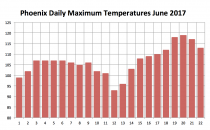
Enlarged
Though above the normal, high heat in June near the solstice is normal and like we find in other areas where monsoonal rains occur, the heat helps draw in moisture and bring seasonal showers. See the big jump from June to July in the climatology. Notice the winter rains that occur mostly in El Nino winters.
A similar monsoon burst occurs in India but with winds blowing offshore in winter, rains are sparse.
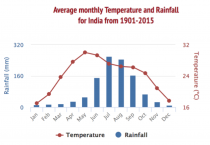
Enlarged
_thumb.jpg)
Enlarged
Like the monsoon in India, the moisture that is drawn in is aided by the heat induced pressure changes (similar to the sea breeze circulation). Moisture comes from the Pacific and often the long way from the Gulf of Mexico.
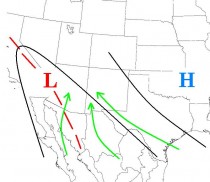
Enlarged
See the rains coming the next two weeks and the heat eases as moisture levels rise.
By Michael Bastasch, Daily Caller

President Donald Trump announced he would fulfill his campaign promise to withdraw from the Paris agreement on climate change, eviscerating a signature achievement of the Obama administration.
Trump’s decision came after weeks of intense lobbying from both sides of the Paris accord debate. Corporations, environmentalists and Democrats urged Trump to stick with the deal, while Republicans and conservative groups pushed for withdrawal.
More intense was the debate within the White House itself. Key staffers were lined on both sides of the issue, making Trump’s decision to withdraw a lengthier process than many anticipated.
While the decision was ultimately Trump’s to make, there were many people working behind the scenes and in public to make sure the president kept his campaign promise to “cancel” the climate accord.
Conservative groups, White House officials and Republican lawmakers worked behind the scenes and in the media as part of the “resistance” movement to the Paris accord, which the Obama administration joined in 2016.
They worked to nudge Trump in the direction of withdrawing from Paris, constantly reminding him of the legal risks to not fulfilling his promise to supporters.
A letter from Senate Majority Leader Mitch McConnell and 21 other top Republican lawmakers in late May “reinforced Trump’s instincts to withdraw” from the Paris agreement, Axios reported, but key administration personnel and conservative heavy-hitters also played a role.
When Trump officially announced his withdrawal from the Paris accord Thursday, Environmental Protection Agency (EPA) Administrator Scott Pruitt walked up to the podium in the Rose Garden to speak. Many in the media saw this as his victory.
Politico reports Pruitt “used his new post as EPA administrator to orchestrate an aggressive campaign to marshal conservative opposition to the Paris agreement.” That campaign included having EPA staffers urge conservative groups to go public with their concerns about the Paris agreement.
Pruitt was the only Trump administration official to publicly bash the accord. In TV appearances in April and May, Pruitt called Paris a “bad deal” that put America “last.”
“Paris is something that we need to really look at closely. It’s something we need to exit in my opinion,” Pruitt told Fox News in April.
Pruitt’s public criticisms of the Paris agreement bolstered conservative groups and Republican officials who opposed sticking with an international deal that never got Senate approval.
But it wasn’t Pruitt’s victory alone.
Trump’s domestic energy policy adviser Mike Cantanzaro worked to nudge the president to withdraw from Paris, according to a source familiar with the efforts. But General counsel Donald McGahn was “probably the most pivotal voice” in the White House advocating for a withdrawal from the Paris agreement, according to the source.
“We were having trouble getting traction on the argument that the agreement poses some legal risk,” the source said. “Until he joined the conversation.”
During two closed-door meetings in late April and early May, McGahn raised concerns with Trump about the legal risks of staying party to the Paris agreement, Politico reported. McGahn warned the U.S. may not be able to adjust its pledge to cut emissions and that environmentalists could use the Paris agreement to undermine Trump’s deregulatory agenda.
McGahn’s interjection “shocked” Department of State lawyers who largely made the case for staying in the Paris agreement, according to Politico. Secretary of State Rex Tillerson publicly came out in favor of the Paris agreement during his confirmation hearing in January.
Cantanzaro, McGahn and White House chief strategist Steve Bannon led the administration faction opposed to the Paris agreement. They ended up butting heads with pro-Paris advisers Ivanka Trump, Jared Kushner and Gary Cohn. Secretary of State Rex Tillerson and Energy Secretary Rick Perry also favored staying in the Paris accord.
In early May, the heads of 44 free market groups sent a letter to Trump, urging him to withdraw from the agreement. The coalition was led by the Competitive Enterprise Institute (CEI).
CEI was “the energy” and “enabled the issue to stay high profile in the White House for months,” an administration source told Axios.
In May, CEI launched an online petition and ad campaign to remind Trump of his campaign promise to withdraw from the Paris accord, and AEA circulated another petition calling for Trump to withdraw from the agreement.
CEI senior fellows Chris Horner and Marlo Lewis published a report detailing the legal risks of remaining in the accord. CEI’s Myron Ebell, who headed Trump’s EPA transition team, was also public about his opposition to the Paris agreement.
The source told Axios that CEI also “helped generate” the letter from Senate Republicans that reportedly gave Trump the final nudge he needed to announce a withdrawal from Paris. The letter reminded Trump why he opposed Paris in the first place - it didn’t put America first.
About a week before Trump made his decision, McConnell led a group of 22 GOP Senators urging Trump to withdraw from the Paris agreement. McConnell’s letter to Trump reportedly “reinforced” the president’s pre-existing inclination to leave Paris.
“I think there’s a lot of credit due to a lot of people. It’s been a tough fight, and both sides have done about all that can be done,” a source in the conservative movement told The DCNF.
-----------
See this book:
FOX NEWS WASHINGTON:
NOAA REPORTS: That whole April showers thing went a bit overboard last month in the United States. The National Oceanic and Atmospheric Administration said Monday it was the second wettest April on record, averaging 3.43 inches for the nation, nearly an inch above the 20th century average. Only 1957 had more April rain. Records go back to 1895.
Only 5 percent of the U.S. is in drought, the lowest drought footprint the 17-year-old U.S. Drought Monitor has recorded. NOAA calculates that 0.75 percent of the Lower 48 states are considered “very dry.”
NOAA climate scientist Jake Crouch said many storms kept chugging over the U.S. in April from the Pacific. Crouch said April fits global warming patterns of increasing heavy downpours interspersed with drought.
End
------
ICECAP NOTE: It also fits a cooling planet as was underway from 1940 to the 1970s.... NOAA has to add the BS statement in every summary, especially after it hyped drought first in Texas and then California, some opining it was the start of ‘permadrought’. This is already the wettest/snowiest Water Year (October 1 to September 30) in the northern Sierra, beating out 1982/83.
That CO2 is amazing stuff. it freaking does it all!!!
Here is a Patriot Post story from my compadre Joe Bastardi:
Defund Climate Change Research to Pay for Pre-Existing Conditions
Joe Bastardi, Patriot Post
Here’s a novel idea.
Take the billions of dollars that’s going toward what supposedly is a settled science issue - climate change - and use it to create a pool for pre-existing conditions. It is our duty to help those less fortunate and for the government to provide a safety net. So let’s form that safety net, dealing with a known problem today, not a ghost that may or may not be there tomorrow - especially since in the age of fossil fuels human progress has skyrocketed. Do you think medicine would be where it is now without the fossil fuel era?
The rest of the nation would be in the free market for insurance, and combined with tort reform and portability, we may be able to bring the price down.
What has been the cost of fighting climate change? Check out this article in Forbes.
All that money for what? A few molecules of CO2 when the established temperature-CO2 record shows no linkage?
We can’t run from the problems of today, nor can you run from the record of the past. People are much more valuable than a few molecules of CO2.
I doubt the American people approve of billions of dollars being spent on researching whether or not the earth is flat (no offense to Kyrie Irving) or other forms of “settled science.” So for the sake of those suffering from pre-existing conditions, why don’t we take the grant money for climate change research and give it to those who really need it? If it’s “settled science,” then give up the money. You can’t have it both ways! What about investing in our inner cities, another need now? Do climate change researchers need the money more than our sick, poor and needy? I think not. I know not.
Joe Bastardi is chief forecaster at WeatherBELL Analytics, a meteorological consulting firm, and contributor to The Patriot Post on environmental issues.
------------
Note this next story is fitting in that regard. You see the same issues that are being reported on now in medicine and health have been running rampant in meteorology and climatology research. The universities and the NGOs have been milking the flowing dollars supporting the fake climate news which gets carried without question in the sympathetic fake news media.
Has Science Lost its Way?
Science’s reproducibility crisis.
For any study to have legitimacy, it must be replicated, yet only half of medical studies celebrated in newspapers hold water under serious follow-up scrutiny - and about two-thirds of the “sexiest” cutting-edge reports, including the discovery of new genes linked to obesity or mental illness, are later “disconfirmed.”
Though erring is a key part of the scientific process, this level of failure slows scientific progress, wastes time and resources and costs taxpayers excesses of $28 billion a year, writes NPR science correspondent Richard Harris.
The single greatest threat to science right now comes from within its own ranks. Last year Nature, the prestigious international science journal, published a study revealing that “More than 70% of researchers have tried and failed to reproduce another scientist’s experiments, and more than half have failed to reproduce their own experiments.”
The inability to confirm research that was published in highly respected, peer-reviewed journals suggests something is very wrong with how science is being done.
The crisis afflicts even science’s most revered ‘facts,’ as cancer researchers C. G. Begley and Lee Ellis discovered. Over an entire decade they put fifty-three published “landmark” studies to the test; they succeeded in replicating only six - that’s an 11% success rate.
A major culprit, they discovered, is that many researchers cherry-picked the results of their experiments - subconsciously or intentionally - to give the appearance of success, thereby increasing their chances of being published.
“They presented specific experiments that supported their underlying hypothesis, but that were not reflective of the entire data set,” report Begley and Ellis, adding this shocking truth: “There are no guidelines that require all data sets to be reported in a paper; often, original data are removed during the peer review and publication process.”
Another apparent culprit is that - and it’s going to surprise most of you - too many scientists are actually never taught the scientific method. As graduate students, they take oodles of courses in their chosen specialty; but their thesis advisors never sit them down and indoctrinate them on best practices. Consequently, remarks University of Wisconsin-Madison biologist Judith Kimble: “They will go off and make it worse.”
This observation seems borne out by the Nature study, whose respondents said the three top weaknesses behind science’s reproducibility crisis are: 1) selective reporting, 2) pressure to publish, and 3) low statistical power or poor analysis. In other words, scientists need to improve on practicing what they preach, which is: 1) a respect for facts - all of them, not just the ones they like, 2) integrity, and 3) a sound scientific method.
The attendees of the so-called March for Science made a lot of noise about wanting more money and respect from the public and government - what group wouldn’t want that? But nary a whisper was heard from them or the media about science’s urgent reproducibility crisis. Leaving unspoken this elephant-sized question: If we aren’t able to trust the published results of science, then what right does it have to demand more money and respect, before making noticeable strides toward better reproducibility?
Michael Guillen Ph.D., former Science Editor for ABC News, taught physics at Harvard. His novel, “The Null Prophecy,” debuts July 10.
See how Greens in Vermont discuss how a wind project destroyed the environment.
MIT atmospheric science professor Richard Lindzen suggests that many claims regarding climate change are exaggerated and unnecessarily alarmist.
Introduction:
For over 30 years, I have been giving talks on the science of climate change. When, however, I speak to a non-expert audience, and attempt to explain such matters as climate sensitivity, the relation of global mean temperature anomaly to extreme weather, that warming has decreased profoundly for the past 18 years, etc., it is obvious that the audience’s eyes are glazing over. Although I have presented evidence as to why the issue is not a catastrophe and may likely be beneficial, the response is puzzlement. I am typically asked how this is possible.
After all, 97% of scientists agree, several of the hottest years on record have occurred during the past 18 years, all sorts of extremes have become more common, polar bears are disappearing, as is arctic ice, etc. In brief, there is overwhelming evidence of warming, etc. I tended to be surprised that anyone could get away with such sophistry or even downright dishonesty, but it is, unfortunately, the case that this was not evident to many of my listeners. I will try in this brief article to explain why such claims are, in fact, evidence of the dishonesty of the alarmist position.
The 97% meme:
This claim is actually a come-down from the 1988 claim on the cover of Newsweek that all scientists agree. In either case, the claim is meant to satisfy the non-expert that he or she has no need to understand the science. Mere agreement with the 97% will indicate that one is a supporter of science and superior to anyone denying disaster. This actually satisfies a psychological need for many people. The claim is made by a number of individuals and there are a number of ways in which the claim is presented. A thorough debunking has been given in the Wall Street Journal by Bast and Spencer.
One of the dodges is to poll scientists as to whether they agree that CO2 levels in the atmosphere have increased, that the Earth has been warming (albeit only a little) and that man has played some part. This is, indeed, something almost all of us can agree on, but which has no obvious implication of danger. Nonetheless this is portrayed as support for catastrophism. Other dodges involve looking at a large number of abstracts where only a few actually deal with danger. If among these few, 97% support catastrophism, the 97% is presented as pertaining to the much larger totality of abstracts. One of my favorites is the recent claim in the Christian Science Monitor (a once respected and influential newspaper): “For the record, of the nearly 70,000 peer-reviewed articles on global warming published in 2013 and 2014, four authors rejected the idea that humans are the main drivers of climate change.” I don’t think that it takes an expert to recognize that this claim is a bizarre fantasy for many obvious reasons. Even the United Nations Intergovernmental Panel on Climate Change (this body, generally referred to as the IPCC is the body created by the UN to provide ‘authoritative’ assessments of manmade climate change) doesn’t agree with the claim.
....
Concluding remarks:
The accumulation of false and/or misleading claims is often referred to as the ‘overwhelming evidence’ for forthcoming catastrophe. Without these claims, one might legitimately ask whether there is any evidence at all.
Despite this, climate change has been the alleged motivation for numerous policies, which, for the most part, seem to have done more harm than the purported climate change, and have the obvious capacity to do much more. Perhaps the best that can be said for these efforts is that they are acknowledged to have little impact on either CO2 levels or temperatures despite their immense cost. This is relatively good news since there is ample evidence that both changes are likely to be beneficial although the immense waste of money is not.
I haven’t spent much time on the details of the science, but there is one thing that should spark skepticism in any intelligent reader. The system we are looking at consists in two turbulent fluids interacting with each other. They are on a rotating planet that is differentially heated by the sun. A vital constituent of the atmospheric component is water in the liquid, solid and vapor phases, and the changes in phase have vast energetic ramifications. The energy budget of this system involves the absorption and reemission of about 200 watts per square meter. Doubling CO2 involves a 2% perturbation to this budget. So do minor changes in clouds and other features, and such changes are common. In this complex multifactor system, what is the likelihood of the climate (which, itself, consists in many variables and not just globally averaged temperature anomaly) is controlled by this 2% perturbation in a single variable? Believing this is pretty close to believing in magic. Instead, you are told that it is believing in ‘science.’ Such a claim should be a tip-off that something is amiss. After all, science is a mode of inquiry rather than a belief structure.
Richard Lindzen is the Alfred P. Sloan Professor of Atmospheric Sciences, Emeritus at Massachusetts Institute of Technology.
---------
ICECAP NOTE:
This screen captures are from Tony Hellers address to the Washington State Senate.

Crowds marched again for Earth Day. Many were really marching in anger because their candidate lost, some probably feared what would happen to their benefits when the bloated government bureaucracy is forced to shrink, others showed the typical march disdain for democracy which gives them the right to march and protest, others were deluded into thinking the critical mission they supported to save the planet was threatened.
The book Extraordinary Popular Delusions and the Madness of Crowds was a study of crowd psychology by Scottish journalist Charles Mackay, first published in 1841.
It was mentioned by astronomer Carl Sagan, Professor and Director of Cornell University’s Laboratory for Planetary Studies and host of the series Cosmos a Personal Voyage in a 1995 book The Demon-Haunted World: Science as a Candle in the Dark.
Sagan explained the scientific method and encouraged critical and skeptical thinking. He emphasized the importance of recognizing the difference between what is considered valid science and which is in reality pseudoscience.
Sagan like fellow Cornell physicist/lecturer Richard Feynman argued when new ideas are offered for consideration, they should be tested by means of skeptical thinking and should stand up to rigorous questioning. Feynman lectured:
“If a theory or proposed law disagrees with experiment (or observation), it’s wrong. In that simple statement is the key to science. It doesn’t make any difference how beautiful your guess is, it doesn’t matter how smart you are who made the guess, or what your name is… If it disagrees with experiment, it’s wrong. That’s all there is to it.”
Sir Karl Popper, an Austrian-British philosopher and professor is generally regarded as one of the greatest philosophers of science of the 20th century. Popper is known for his rejection of the classical inductivist views on the scientific method, in favor of empirical falsification: A theory in the empirical sciences can never be proven, but it can be falsified, meaning that it can and should be scrutinized by decisive experiments.
See in this chapter by James R. Fleming, Professor of Science, Technology and Society at Colby College, how the scientific method worked in climate change theories all through history.
That held until politicians with a globalist viewpoint were searching for a cause that would drive their globalization goals. The Club of Rome was an organization formed in 1968 consisting of current and former heads of state, UN bureaucrats, high-level politicians and government officials, diplomats, scientists, economists and business leaders from around the globe. It raised considerable public attention in 1972 with its report The Limits to Growth. The club states that its mission is “to act as a global catalyst for change through the identification and analysis of the crucial problems facing humanity and the communication of such problems to the most important public and private decision makers as well as to the general public.” In 1991, the club published The First Global Revolution in which they decided:
“In searching for a new enemy to unite us, we came up with the idea that pollution, the threat of global warming...would fit the bill...It does not matter if this common enemy is “a real one or...one invented for the purpose.”
That is when massive investment began into building a case for their cause by funding the UN, global universities, scientists and in government agencies through published work and reports ensuring an alignment around the theory that we are responsible for all bad things that happen and paint them as unprecedented. That investment has exceeded $1 trillion dollars. Meanwhile instead of engaging and supporting critical thinking and testing of hypothesis, there was concerted effort to paint anyone not supporting their theory as deniers with not so subtle attempts to liken them to holocaust deniers and those who denied the dangers of cigarettes.
Scientists practicing the scientific method were demonized, stripped where possible of their role in universities and in government agencies. Many have remained silent to keep their position. A few courageous whistle blowers have emerged from the UN, government and universities but they have been attacked by other scientists and generally ignored by the media, which in many cases are trained in journalism schools, which prepare environmental journalists to battle, discredit or deny air-time to any skeptics.
As Ron Arnold wrote in 2015:
You can credit the Society of Environmental Journalists (SEJ), a 501(c)(3) tax-exempt organization with more than 1,200 member reporters and academics in the United States, Canada, Mexico, and 27 other countries, with the general decline in journalistic standards among environmental journalists.
SEJ has received 119 grants from 35 notorious anti-development foundations, totaling $9.5 million since 1999. With this financial prompting, the SEJ’s stalwarts, including Andrew Revkin (The New York Times), Seth Borenstein (Associated Press), and Suzanne Goldenberg (The Guardian), have led the decline of climate news into ideological warfare.
To many SEJ writers, it is not possible for them to be biased, because issues have only one side: their own.
Associated Press’ Borenstein asserted, “The nature of reporting is to get two sides to an issue. But the nature of science reporting is to get what’s really happening.” SEJ thinks whatever isn’t environmental dogma is a lie, as indicated by its incredible reference webpage “Climate Change: A Guide to the Information and Disinformation.”
SEJ writers also promote “false balance,” the notion that giving opposing views concerning climate change any mention at all is not real balance because skeptics are liars paid to undermine the truth, (which) justifies total censorship.... Some go as far as to recommend violence to achieve environmental goals
With the Obama administration’s Machiavellian collusion, reporters who are more environmentalist than journalist now rule the climate beat.
It is increasingly clear as MacKay warned 166 years ago, there is a politically-driven, wrong though popular delusion thanks to the help of complicit media. Last weekend also showed a madness of crowds.
The whole aim of practical politics is to keep the populace alarmed (and hence clamorous to be led to safety) by menacing it with an endless series of hobgoblins, all of them imaginary. H. L. Mencken
THE PAUSE THE MEDIA NEVER MENTIONED
Until the last strong El Nino brought the normal spike in global temperatures, there was much ado about what was being called a pause of almost 19 years in global temperature rise. Eventually even the once professional societies like the AMS, had to admit to it and had papers published and many panels at annual meetings discussing why the accelerated warming predicted by climate models and the UN IPCC was not occurring even as global CO2 levels continued to rise.
The first efforts made to address this inconvenient truth were to modify the data sets (surface and some balloon and satellite) to bring the data closer into agreement with the models (instead of rethinking the theory and models as Sagan, Feynman and Popper would argue). Then the got the help from El Nino. A weak La Nina and a declining sun should cause temperatures to fall off and the pause resume but the train may have left the station unless we walk away from the Paris Treaty.
This conflicting data had for several years brought an uncomfortable feeling among many believers, what is called ‘cognitive dissonance’, but most all were able to shake it off especially when they have so many colleagues riding the same grant gravy trains that benefit from the failing theory or have business financial potential and/or personal political ideologies that the plans to address the so-called Catastrophic Anthropogenic Global Warming fits so nicely into.
A fine work over five decades ago ”When Prophecies Fail” by Leon Festinger, a social psychologist helps explain how they can do that and why we may not see a widespread rapid return to sanity on global climate change even as the pause resumes and other evidence mounts the prevailing greenhouse theories are flawed, global warming has ceased and climate change may be largely due to natural variability.
When disconfirmatory (contrary) evidence is presented, Festinger found one condition that often determined whether the belief is discarded or maintained with new fervor by belief with a strongly held belief. That was whether or not the individual believer has social support. It is unlikely that one isolated believer could withstand strong disconfirming evidence. If, however, the believer is a member of a group of convinced persons who can support one another, you might expect the belief to be maintained and the believers to attempt to proselytize or persuade non-members that the belief is correct even in the face of data suggesting otherwise.
Today there is a huge ‘social support’ group of grant toting modelers and researchers, agenda driven or ratings driven journalists, environmentalists, pseudo-intellectualists, government agencies and corporations that have realized green is their favorite color and see this as a way to keep green paper flowing into their coffers and pockets. We have farmers who are benefiting from the misplaced focus on alternative fuel from crops, traders and major market firms licking their chops at the prospects of big time money from carbon trading, big oil and alternative energy companies that have realized this is the vector to bigger profits and the politicians and political activists who see it as a way to accomplish ulterior goals about changing society and increasing their powerbase.
In reality although there is claimed consensus, scientists and the public are not so convinced. It will only be after the public realizes they have been snookered or like in the UK, they realize the pains for adhering to the green assault on humanity is insufferable (Brexit and the French election were largely due to this) that the situation may turn on them. We can only hope damage done here is not great or irreparable when that day finally comes.
Perhaps, the greens and the administration and untrustworthy mainstream media with the outrageous claims saying “global warming is the greatest peril that humanity faces” as Bill Maher opined this past week, “Sarin Gas is not the most dangerous chemical poison, CO2 is,” has them sensing a snake oil salesman situation. Someone needs to inform Maher that every exhaled breathe he takes has 100 times more CO2 as in the air.
The late great Michael Crichton, author of State of Fear on this topic, said “Historically, the claim of consensus is the first refuge of scoundrels; it is a way to avoid debate by claiming the matter is already settled.” “Whenever you hear the consensus of scientists agrees on something or other, reach for your wallet, because you’re being had.”
“Let’s be clear: the work of science has nothing whatever to do with consensus. Consensus is the business of politics. In science, consensus is irrelevant. What is relevant is reproducible results. The greatest scientists in history are great precisely because they broke with the consensus.” (Galileo, Newton, Einstein, etc). He concluded: “There is no such thing as consensus science. If it’s consensus, it isn’t science. If it’s science, it isn’t consensus. Period.”
We all miss the man and his work. By the way in Has Science Lost its Way? , Dr. Michael Guillen reported that last year Nature, the prestigious international science journal, published a study revealing that “More than 70% of researchers have tried and failed to reproduce another scientist’s experiments, and more than half have failed to reproduce their own experiments.”
The inability to confirm research that was published in highly respected, peer-reviewed journals suggests something is very wrong with how science is being done. They observed one of the issues was that too many scientists are actually never taught the scientific method.
Before scientists do research they ought to look at the words and work of Sagan, Feynman and Popper. Bad science leads to bad policies. Bad policies harm good people.
The men the American people admire most extravagantly are the most daring liars; the men they detest most violently are those who try to tell them the truth. H. L. Mencken
By Joe Bastardi, The Patriot Post
The March for Science is tomorrow and no one in their right mind would say they are against it because of its name. First of all, you are standing against the right of people to march for whatever cause they wish. Second, you would be portrayed as someone who is against science.
I am all for science. I think the climate changes. It always has and always will. Yet I have been portrayed as anti-science and a climate change “denier” by many who will be marching for things I certainly believe in.
Just who does not believe in science? It’s a straw man the marchers are marching against.
What is questionable is the way science is being portrayed and used. Here is an example. You have seen this a kajillion times; now it’s a kajillion and one.
This shows no apparent linkage between CO2 and temperature in a time scale that goes back millions of years. So as someone who is acquainted with the scientific method, I am instantly skeptical of the idea that after all this time, there is now a linkage. That does not mean there can’t be, and I am open to that argument and understand it. But as I asked in my last blog, how much linkage is there?
What I am trying to figure out is why there is a march when many of the people in that march have no tolerance for the questioning of their position. While I think it’s noble to be inclusive and diverse, are any “skeptics” included as speakers? Is there diversity of thought? Of course not. Because in spite of what you see in the graphs above and below, they ignore the obvious. The planet has always had temperature swings - larger than this and independent of CO2 - that should make any person searching for the truth skeptical as to how much CO2 contributes.
Questioning of dogma need not apply. That sounds more like religion than science. Being for science means being for discussion. So who is anti-science here? A classic case of “blame your opposition for what you are actually doing.” It is not the skeptic side shutting down debate.
One must be very careful when questioning the motives in academia. There seems to be two opposing forces today in society in general: people who seek to earn their keep, and people who believe they are owed their keep. There is no question that without research - much of it done in our schools, but also government and the private sector - we would not be where we are today. But guess what fuels the economic engine that allows people the grant money, etc., for research?
I have to question motivation. For instance, if man-made global warming is such a done deal, why are we researching it anymore? Actual settled science (freezing and boiling points of water, gravity, the sun is darn hot) is not being researched. So apparently AGW is not settled science. And for a good reason - if it is true this is all man-made, it’s the first time, established by science, in recorded history. Another reason for being skeptical.
But the statement by the former EPA director that the actions have shut down a lot of business in this country and were brakes on the American economic engine really says a lot about what may be behind this. Preventing only .01 Celsius (you can’t even measure that with certainty) over 30 years was not the main reason. Instead, it was being a good example for the rest of the world. When I heard that it was so absurd to me I thought it was meant to sabotage the EPA mission. But no one said boo about it.
Finally, there seems to be a mass denial (there is that nasty word) that the progress of humans, and of course researchers, has been huge in the fossil fuel era.
The assumption that this would not continue makes no sense. In addition, a vibrant economy seems to be a moral and ethical positive. As far as researchers worried about grants being cut, would you rather get 10% of 50 or 15% of 10? Yes, it’s a bit of an exaggeration, though it makes my point. The population curve and the increase in GDP and life expectancy says to me the pie is expanding and many new challenges that need researching are going to continue to challenge people. And science will have to meet that challenge.
I will not be going to the March for Science. I rather doubt I would be welcome and so I would have to go in a disguise for fear of being torn limb from limb from the open tolerant marchers. But as in all questions in science, which involve why, when I look at the march, I am asking why about that.
No one is anti-science, even if a group of people wish to try to convince you of that.
Joe Bastardi is chief forecaster at WeatherBELL Analytics, a meteorological consulting firm, and contributor to The Patriot Post on environmental issues.
UPDATE: Mr. President: Stop the Paris Climate Treaty
To President Donald J. Trump:
Don’t listen to the Swamp. Please keep your campaign promise to withdraw the United States from the U.N. Paris Climate Treaty and send it to the Senate for a vote.
President Trump should keep his promise to withdraw from the Paris Climate Treaty. The Paris treaty is a key part of President Obama’s war on America’s most affordable and abundant energy - coal, oil, and natural gas.
But the Washington Swamp and the United Nations establishment are fighting hard to change President Trump’s mind. These are not the people who voted to change the direction of the country.
The Paris Climate Treaty requires regulations that will force Americans to pay more and more for energy. Higher energy costs hurt hardworking American families, destroy jobs, and put our nation at a competitive disadvantage.
The Paris Agreement is a treaty. According to the Constitution, treaties require a two-thirds supermajority vote by the U.S. Senate.
The Paris Climate Treaty process was dishonest and unconstitutional. Congress has voted repeatedly against energy-rationing climate legislation time and again. A Senate vote against ratification will re-affirm this position.
---------
Climate alarmists use faulty science and bald assertions to demand end to fossil fuels
Paul Driessen
Driessen_-_Real_science_must_guide_policy.pdf
All too many alarmist climate scientists have received millions in taxpayer grants over the years, relied on computer models that do not reflect real-world observations, attacked and refused to debate scientists who disagree with manmade climate cataclysm claims, refused to share their computer algorithms and raw data with reviewers outside their circle of fellow researchers and then used their work to make or justify demands that the world eliminate the fossil fuels that provide 80% of our energy and have lifted billions out of nasty, brutish, life-shortening poverty and disease.
A recent US House of Representatives Science Committee hearing on assumptions, policy implications and scientific principles of climate change showcased this. Testimony by climate scientists Drs. John Christy, Judith Curry and Roger Pielke, Jr. contrasted sharply with that of Dr. Michael Mann.
Christy noted that Congress and the public have been getting biased analyses and conclusions that begin with and attempt to confirm the belief that human greenhouse gas (GHG) emissions drive climate change. He said government should “organize and fund credible ‘Red Teams’ that look at issues such as natural variability, the failure of climate models and the huge benefits to society from affordable energy, carbon-based and otherwise.” He demonstrated how average global temperatures predicted by dozens of models for 2015 are now off by a full half-degree Celsius (0.9 F) from what has actually been measured.
Curry discussed how she has been repeatedly vilified as an “anti-science” climate change “denier” and “disinformer.” But she focused on the role of the scientific method, especially as related to the complex forces involved in climate change - and especially when used to advise on policy and law. Real science means positing and proving a hypothesis with convincing real world evidence. Models can help, but only if they accurately reflect the total climate system and their results conform to real world observations.
Pielke discussed his own mistreatment as a “denier” and showed that there is “little scientific basis” for claims that extreme weather events (tornadoes, hurricanes, floods, droughts) have increased in recent decades due to GHG emissions. In fact, IPCC and other studies reveal that the USA and world have had “remarkable good fortune” with extreme weather in recent years, compared to the past: 23 major hurricanes hit the US East Coast 1915-1964; but only 9 in 1965-2016 and not one since October 2005. He also offered 18 specific recommendations for improving scientific integrity in climate science.
Mann said the other three witnesses represent a “tiny minority” who stand opposed to the 97% who agree that “climate change is real, is human-caused, and is already having adverse impacts on us, our economy, and our planet.” He defended his “hockey stick” historic temperature graph, claimed climate models have been “tested vigorously and rigorously” and have “passed a number of impressive tests,” insisted that warming [of a couple hundredths of a degree] in recent years proves that manmade global warming “has continued unabated,” and accused those who contest these statements of being “anti-science” deniers.
The “97% consensus” is imaginary - a fabrication. One source was a survey sent to 10,256 scientists, of whom 3,146 responded. But their number was arbitrarily reduced to 77 “expert” or “active” climate researchers, of which 75 agreed with two simplistic questions that many would support. (Has Earth warmed since 1800? Did humans play a significant role?) Voila! 97% consensus. But what about the other 3,069 respondents? 75 out of 3,146 is barely 0.02 percent. Purported consensus studies by Cook, Oreskes and others were just as bogus.
Moreover, governments have been spending billions of dollars annually on climate research. The vas majority went to the alarmist camp. If $25,000 or $100,000 a year from fossil fuel interests can “buy” skeptical scientists, as we are often told, how much “consensus” can billions purchase? If many scientists who contest “dangerous manmade climate change” are harassed, or threatened with RICO prosecutions, how many will have the courage to speak out and challenge the “consensus” and “settled science”?
These are timely questions. On April 12, 1633 the Catholic Church convicted astronomer Galileo Galilei of heresy, for refusing to accept its doctrine that the Sun revolves around the Earth.
But far more important, the climate battle is not merely a debate over miasma versus germ theory of disease, AC versus DC current, or geologic mechanisms behind plate tectonics. It’s far more even than disagreements over how much humans might be affecting Earth’s climate, or how bad (or beneficial) future changes might be, on a planet where climate fluctuations have occurred throughout history.
Manmade climate catastrophe claims are being used to justify demands that the United States and world eliminate the carbon-based fuels that provide 80% of the energy that makes modern industry, civilization and living standards possible - and that continue to lift billions of people out of poverty and disease.
Climate alarmists want that radical transformation to take place right now. McKinsey & Company, the UN and assorted activists say the world must spend some $93 trillion over the next 15 years to convert completely from fossil fuels to “sustainable” energy! Or it will be too late. Our planet will be doomed.
Claims and demands like those require solid, incontrovertible proof that climate alarmists are right. Not just computer models, repeated assertions, “peer review” among like-minded researchers seeking their next government grant, or a partial-degree of warming amid multiple El Ninos and cooling cycles. They require “Red Team” analyses and open, unfettered debate over every aspect of human and natural influences on Earth’s climate, the ways carbon dioxide improves plant growth, and the need for abundant, reliable, affordable electricity and motor fuel for every person in every nation.
We haven’t had any of that so far. Up to now, climate chaos is just one more Club of Rome supposedly looming disaster, supposedly caused by human intervention in natural processes, supposedly requiring immediate, fundamental changes in human behavior, to avoid supposed global calamities - threats to the very survival of our wildlife, civilization and planet. It’s all assertions, devoid of persuasive evidence.
It’s true that virtually all nations have signed the Paris accords. However, only President Obama signed it for the USA; the Senate never ratified the decision. And the US reduced its CO2 emissions by 12.5% since 2007, while Europe’s carbon dioxide emissions rose 0.7% in one year, 2014-2015.
Britain is looking into rescinding some 2020 clean energy targets and using more coal and natural gas. EU nations are realizing that overpriced, unreliable wind and solar power is hammering families and killing their jobs and economies. Virtually all the developing nations that signed onto the Paris (non)treaty did so because they were promised trillions of dollars in climate “adaptation, mitigation and reparation” money.
That brings us to another April anniversary: the 1815 eruption of Indonesia’s Mt. Tambora. This monumental volcanic explosion blew an inconceivable 4,650 feet off the volcano; sent 36 cubic miles of ash, rock, sulfur and other gases into the atmosphere; triggered tsunamis that killed over 10,000 people; and caused serious climate changes and crop failures that killed 80,000 more over the following year.
We may be about to witness another volcanic explosion. Under the Paris insanity, developed nations are expected to de-carbonize, de-industrialize and curb their growth - while sending $100 billion per year to ruling elites in developing countries that are not required to trim fossil fuel use or GHG emissions.
It cannot and will not happen. In fact, industrialized nations are already reneging on their pledges, refusing to contribute to the Green Climate Fund, or recasting current foreign aid as Paris climate money. China, India, Brazil and poor countries are outraged. They want new money, more money - or else they will walk away from their commitments, and the Paris house of cards will collapse. It should collapse.
Billions of people are still energy-deprived, impoverished, diseased and starving. Millions are dying needlessly every year. Faulty, authoritarian climate and “sustainability” claims are being use to perpetuate these travesties. It’s time to help poor countries get the same energy, technologies and opportunities we have - so that they can take their rightful places among Earth’s healthy and prosperous people.
Paul Driessen is senior policy analyst for the Committee For A Constructive Tomorrow (http://www.CFACT.org) and author of Eco-Imperialism: Green power - Black death.Driessen_-_Real_science_must_guide_policy.pdf
Nobel Laureate in Physics; “Global Warming is Pseudoscience”
-------
Environmentalists truly believed and predicted during the first Earth Day in 1970 that the planet was doomed unless drastic actions were taken.

Humanity never quite got around to that drastic action, but environmentalists still recall the first Earth Day fondly and hold many of the predictions in high regard.
So this Earth Day, The Daily Caller News Foundation takes a look at predictions made by environmentalists around the original Earth Day in 1970 to see how they’ve held up.
Have any of these dire predictions come true? No, but that hasn’t stopped environmentalists from worrying.
From predicting the end of civilization to classic worries about peak oil, here are seven environmentalist predictions that were just flat out wrong.
1: “Civilization Will End Within 15 Or 30 Years”
Harvard biologist Dr. George Wald warned shortly before the first Earth Day in 1970 that civilization would soon end “unless immediate action is taken against problems facing mankind.” Three years before his projection, Wald was awarded the Nobel Prize for Physiology or Medicine.
Wald was a vocal opponent of the Vietnam War and the nuclear arms race. He even flew to Moscow at one point to advise the leader of the Soviet Union on environmental policy.
Despite his assistance to a communist government, civilization still exists. The percentage of Americans who are concerned about environmental threats has fallen as civilization failed to end by environmental catastrophe.
2: “100-200 Million People Per Year Will Be Starving To Death During The Next Ten Years”
Stanford professor Dr. Paul Ehrlich declared in April 1970 that mass starvation was imminent. His dire predictions failed to materialize as the number of people living in poverty has significantly declined and the amount of food per person has steadily increased, despite population growth. The world’s Gross Domestic Product per person has immeasurably grown despite increases in population.
Ehrlich is largely responsible for this view, having co-published “The Population Bomb” with The Sierra Club in 1968. The book made a number of claims including that millions of humans would starve to death in the 1970s and 1980s, mass famines would sweep England leading to the country’s demise, and that ecological destruction would devastate the planet causing the collapse of civilization.
3: “Population Will Inevitably And Completely Outstrip Whatever Small Increases In Food Supplies We Make”
Paul Ehrlich also made the above claim in 1970, shortly before an agricultural revolution that caused the world’s food supply to rapidly increase.
Ehrlich has consistently failed to revise his predictions when confronted with the fact that they did not occur, stating in 2009 that “perhaps the most serious flaw in The Bomb was that it was much too optimistic about the future.”
4: “Demographers Agree Almost Unanimously ... Thirty Years From Now, The Entire World ... Will Be In Famine”
Environmentalists in 1970 truly believed in a scientific consensus predicting global famine due to population growth in the developing world, especially in India.
“Demographers agree almost unanimously on the following grim timetable: by 1975 widespread famines will begin in India; these will spread by 1990 to include all of India, Pakistan, China and the Near East, Africa. By the year 2000, or conceivably sooner, South and Central America will exist under famine conditions,” Peter Gunter, a professor at North Texas State University, said in a 1970 issue of The Living Wilderness."By the year 2000, thirty years from now, the entire world, with the exception of Western Europe, North America, and Australia, will be in famine.”
India, where the famines were supposed to begin, recently became one of the world’s largest exporters of agricultural products and food supply per person in the country has drastically increased in recent years. In fact, the number of people in every country listed by Gunter has risen dramatically since 1970.
5: “In A Decade, Urban Dwellers Will Have To Wear Gas Masks To Survive Air Pollution”
Life magazine stated in January 1970 that scientist had “solid experimental and theoretical evidence” to believe that “in a decade, urban dwellers will have to wear gas masks to survive air pollution...by 1985 air pollution will have reduced the amount of sunlight reaching Earth by one half.”
Despite the prediction, air quality has been improving worldwide, according to the World Health Organization. Air pollution has also sharply declined in industrialized countries. Carbon dioxide (CO2), the gas environmentalists are worried about today, is odorless, invisible and harmless to humans in normal amounts.
6: “Childbearing [Will Be] A Punishable Crime Against Society, Unless The Parents Hold A Government License”
David Brower, the first executive director of The Sierra Club made the above claim and went on to say that “all potential parents [should be] required to use contraceptive chemicals, the government issuing antidotes to citizens chosen for childbearing.” Brower was also essential in founding Friends of the Earth and the League Of Conservation Voters and much of the modern environmental movement.
Brower believed that most environmental problems were ultimately attributable to new technology that allowed humans to pass natural limits on population size. He famously stated before his death in 2000 that “all technology should be assumed guilty until proven innocent” and repeatedly advocated for mandatory birth control.
Today, the only major government to ever get close to his vision has been China, which ended its one-child policy last October.
7: “By The Year 2000 ... There Won’t Be Any More Crude Oil”
On Earth Day in 1970 ecologist Kenneth Watt famously predicted that the world would run out of oil saying, “You’ll drive up to the pump and say, ‘Fill ‘er up, buddy,’ and he’ll say, ‘I am very sorry, there isn’t any.’”
Do You Think Environmentalists Make Up Predictions Or They’re Genuinely Wrong?
Numerous academics like Watt predicted that American oil production peaked in 1970 and would gradually decline, likely causing a global economic meltdown. However, the successful application of massive hydraulic fracturing, or fracking, caused American oil production to come roaring back and there is currently too much oil on the market.
American oil and natural gas reserves are at their highest levels since 1972 and American oil production in 2014 was 80 percent higher than in 2008 thanks to fracking.
Furthermore, the U.S. now controls the world’s largest untapped oil reserve, the Green River Formation in Colorado. This formation alone contains up to 3 trillion barrels of untapped oil shale, half of which may be recoverable. That’s five and a half times the proven reserves of Saudi Arabia. This single geologic formation could contain more oil than the rest of the world’s proven reserves combined.
(H/T, Ronald Bailey at Reason and Mark Perry at the American Enterprise Institute).
The Cornwell Alliance has a series of videos on India at the crossroads here. Here are three latest videos.
by Julie Kelly
March 30, 2017 5:23 PM
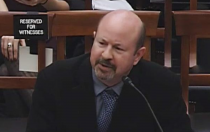
If the climate-change evangelist can’t be bothered to take a House hearing seriously, why should anyone take him seriously? In his testimony to the House Science Committee on Wednesday, Michael Mann, one of the world’s leading climate scientists, told the story of Trofim Lysenko, a plant scientist who worked for Stalinist Russia: Lysenko was a Russian agronomist and it became Leninist doctrine to impose his views about heredity, which were crackpot theories, completely at odds with the world’s scientists. Under Stalin, scientists were being jailed if they disagreed with his theories about agriculture. And Russian agriculture actually suffered, scientists were jailed, many died in their jail cells and potentially millions of people suffered from the disastrous agriculture policies that followed from that.
The gist of Mann’s anecdote was that scientists who challenge the ruling government’s diktat on any given scientific issue are demonized and punished while innocent bystanders suffer. In the here and now, this would seemingly apply to the minority of scientists brave enough to question the reigning dogma of climate science. After all, these are the folks who have been threatened by top law-enforcement officials, personally and professionally attacked by their peers, and even driven out of their academic positions due to the harassment. But astonishingly, Mann was not talking about those scientists: He was talking about himself. In his alternative universe, he and other climate scientists are the martyrs, oppressed and silenced by the Politburo. Never mind that Mann - a tenured professor at one of the country’s top public universities - opened his testimony by reciting a prodigious list of awards he has won, books he has authored, scientific organizations he leads. He is celebrated by the media and environmental groups around the world, and yet in front of Congress he talked like a guy on his way to the Gulag. It takes a special blend of hubris, juvenility, and dishonesty to portray yourself as a victim when you are really the bully.
It was quite a spectacle.
Mann was joined on the panel by Judith Curry, John Christy, and Roger Pielke, Jr. - three scientists who have actually endured the kind of political witch-hunts Mann referred to. Rather than present data or debate the science, Mann mostly engaged in the sophistry that has gradually undermined the credibility of climate science. He repeatedly referred to a bogus “97 percent consensus” about man-made climate change, and accused the Heartland Institute of being a “climate-change denying, Koch brothers-funded outlet.”
He engaged in one ad hominem attack after another against his fellow panelists and the committee’s chairman, Representative Lamar Smith. He questioned whether Smith really understood the scientific method and read a nasty quote about Smith from a smear piece in Science magazine Mann’s rhetoric became so inflamed that he was finally upbraided by Representative Dana Rohrabacher.
“From the get go, we have heard personal attack after personal attack coming from those claiming to represent the mainstream of science,” Rohrabacher said to Mann. “Call people ‘deniers’ all you want, use any kind of name you want...when we talk about Mr. Lysenko, that’s the kind of thing they did to the scientists in Russia. Try to call people names and beat them into submission, that’s a Stalinist tactic.”
Mann’s name-calling prompted Representative Darin LaHood (R., Ill.) to bring up his defamation lawsuit against National Review. After getting confirmation from Curry and Pielke that they had been subjected to attacks by Mann - Pielke said he couldn’t “keep up with all of Dr. Mann’s epithets” - LaHood called Mann on his hypocrisy: “You mention in your opening statement about staying away from that and yet we have a suit that’s been filed based on those exact same things. There’s a real disconnect between a defamation suit that does the exact same thing you’re engaged in that in this public forum.”
Turns out Mann appears to be a bit of a denier himself. Under questioning, Mann denied being involved with the Climate Accountability Institute even though he is featured on its website as a board member. CAI is one of the groups pushing a scorched-earth approach to climate deniers, urging lawmakers to employ the RICO statute against fossil-fuel corporations. When asked directly if he was either affiliated or associated with CAI, Mann answered “no.” I talked to Pielke after the hearing. He was clearly frustrated about the status of the science he loves. “If these are the leading voices of climate science, they can have it,” he told me. “The field is so politicized that it’s almost impossible to break through. Now we are being compared to murderers and Stalinists. If their favored policies are so fragile in light of legitimate critique, they might want to rethink their policies.” Mann was obviously trolling the committee and humoring his base during the hearing; he didn’t even pretend to take it seriously. (He later tweeted that - on a dare - he had referenced the movie The Princess Bride during his testimony.) That is certainly his prerogative. But you would think the day after President Trump decimated the Obama administration’s climate-change agenda by rolling back the Clean Power Plan, a leading climate scientist would at least try to make a compelling case against such sweeping action. But Mann put his own ego ahead of science.
Not everyone was amused. “Dr. Mann’s hypocrisy was on full public display,” Smith told me via e-mail. “Members of the scientific community should be free from such ad hominem attacks. Those who engage in name-calling seldom have the facts on their side.” If Mann’s behavior is representative of the seriousness of “mainstream” climate scientists, we should all reconsider the credibility of his message.
Julie Kelly is a writer from Orland Park, Ill.
---------
Hump Day Hilarity: Mann-o-War at the House Climate Science Hearing
Anthony Watts
Josh writes:
On this historic Brexit day the fun has not been confined to this continent. Over in the US they have had a ‘hearing’ on Climate Science with three of the world’s most eminent climate scientists. Michael Mann was there too.
The Hearing-Climate Science: Assumptions, Policy Implications, and the Scientific Method, House Committee on Science, Space, and Technology. On the Panel were Dr. Judith Curry, Dr. John Christy. Dr. Michael Mann, and Dr. Roger Pielke Jr.
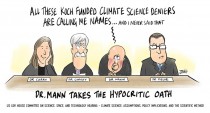
Worth watching (nearly) the whole thing.
Added: links to written testimony are within each name. Anthony
Witnesses
Dr. Judith Curry
President, Climate Forecast Applications Network; Professor Emeritus, Georgia Institute of Technology
Dr. John Christy
Professor and Director, Earth System Science Center, NSSTC, University of Alabama at Huntsville; State Climatologist, Alabama
Dr. Michael Mann
Distinguished Professor of Atmospheric Science, Pennsylvania State University; Director, Earth System Science Center (ESSC), Pennsylvania State University
Dr. Roger Pielke Jr.
Professor, Environmental Studies Department, University of Colorado
-------
See James Delingpole on Mann’s loss of memory and false claims here.\
See Fabius Maximus Professor Michael Mann destroys the case for action on climate change





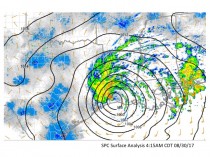
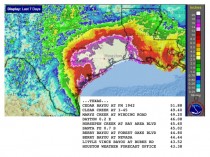
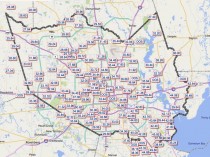
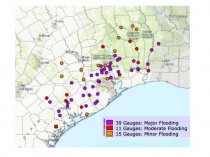


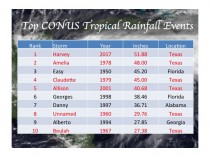
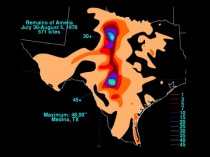
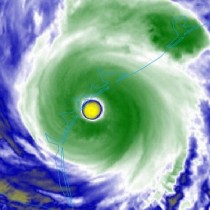
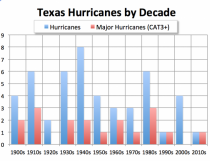

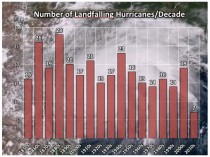
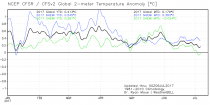
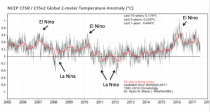
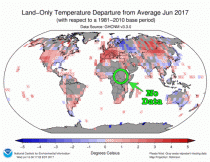
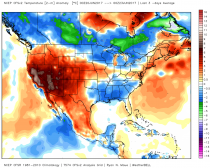
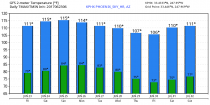
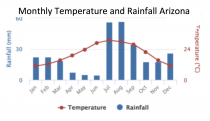


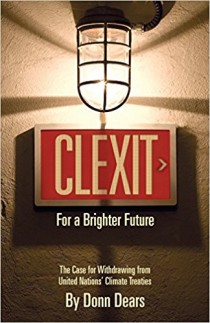
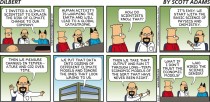
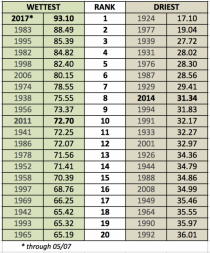
_thumb.png)
